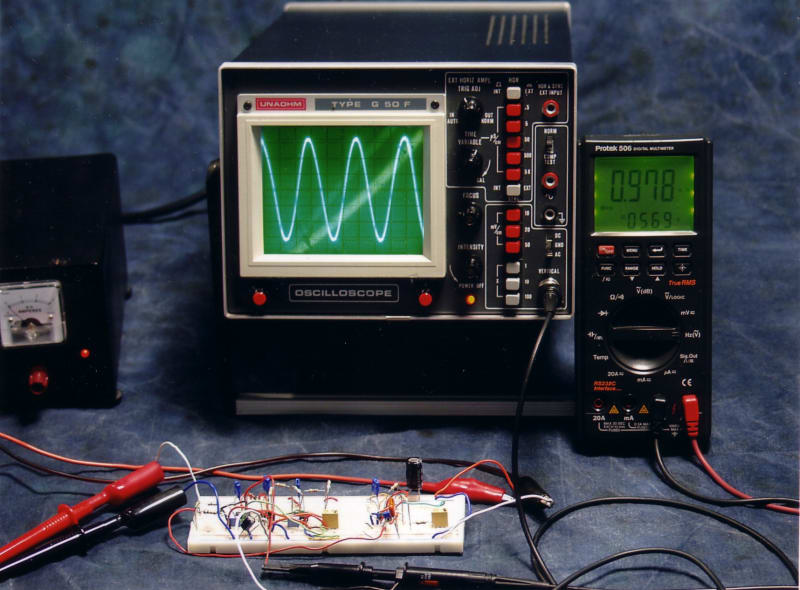INTRODUCTION:
As known to persons skilled in electronics, filters have an essential role.
In fact, starting from a source frequency signal, it’s necessary to process it and obtain another one having phase and amplitude according to a wanted predetermined frequency.
In the telecommunications field particulary, where high amplification is necessary, a system can become critical if the filtering operation is not adequate, and the useful information can be lost.
Until now analog active filters have had several problems, mainly due the parasitic effects of the amplifiers although many compensation techniques have been studied. To obviate the problem, usually several filter stages are cascade connected, but this dramatically increases the cost and can make the system unstable, which is unacceptable.
INVENTION
2° order, 3 base-stages biquad/universal continuous time (CT) analog active filters type resonant and, more particulary, noiseless active full self-compensation techniques for improving the frequency range, the stability and/or the selectivity of the filters themselves with a very low or as if zero cost, overcoming said problems.
These active filters techniques are revolutionary, because they are the world's only ones in that (fully) extend the limited bandwidth of the operational amplifiers employed using, with new direct connections, a single resistor and/or an additional operational amplifier that has a functionally filtering output, and without destabilizing the filter itself.
ADVANTAGES:
- Very easy to manufacture, no special components or procedures are required;
- They are the most stable (no manual compensation is necessary), and the less noisy* CT single-ended operational amplifiers filters (*noise is the interference signals and the lower is, the higher is the device fidelity);
- They are inexpensive and require less space, this means:
- A lower manufacturing cost than a standard compensated filter;
- Saving power consumption and integrated chip area making more versatile, reliable the circuit(s) and longer its operational life. Ideal for devices that have to work in space or for long time without any human intervention, in critical enviromental conditions also.
APPLICATIONS:
This type of filters may also be adopted in many electronics products which people use every day, improving considerably their performances, such as: TV, radios, walkie talkies, analog/mixed-signal systems, equalizers, SOC (systems on chip), measurement electronic instruments (such as oscilloscopes) and similar devices. Photo of prototype shows their application in a remote infrared reception stage system, wherein high filtering performances are required.
EXPERIMENTAL TEST:
These filters have been carefully studied, go-between thousands of behaviour analysis using the P.S.P.I.C.E. simulator software, and testing dozen of prototypes.
Several types of analog CT active filters are available today, someone recently patented by great companies too using low noise balanced operational amplifiers also, but they can’t make use of the “Total Parasitic Voltage Control System” (TPVCS).
So, this electronic filter invention is the best product in its category, in the light of the above mentioned reasons and for other technical considerations also, which are not covered in this presentation.
Like this entry?
-
About the Entrant
- Name:Roberto Cavazzoni
- Type of entry:individual
- Software used for this entry:Microsim/Orcad Pspice
- Patent status:patented





